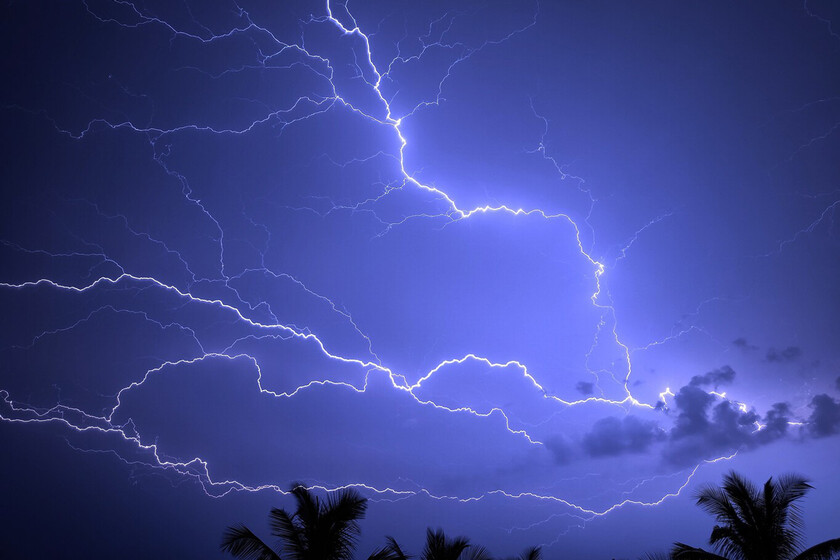Lightning has always been shrouded in mystery. But as our understanding of them increased, new doubts arose. One of them had to do with how lightning spreads, why it zigzags, and how it relates to the cloud that caused it. Now a few Australian physicists have figured out why.
It’s half a century old secret. In recent decades, the explanation of two lightning-related phenomena has remained elusive for the physicists who study them. The first of the unknowns had to do with the shape of the rays. Why did they acquire the zigzag and stepped structure peculiar to them?
Second, it was about why the rays were dark during the first part of their journey, that is, why there was a “dark zone” between where the beam formed and the base from which it began to strike. . This area can measure kilometers.
“There are several textbooks on lightning, but none have explained how zigzags (called steps) form, why the electrically conductive column connecting the steps to the cloud remains dark, and how lightning can travel for miles.” John Lowke, one of the study authors, explained in a press release.
Error: some molecules. Specifically, some molecules called single delta metastable oxygen molecules. These are molecules consisting of two oxygen atoms, similar to what we breathe in in this sense, although they are in a certain quantum state (single) and locally stable (or metastable).
In lightning, an electrical charge in the form of electrons strikes the oxygen molecules and transforms them into these high-energy metastable single oxygen molecules. These shocks are what create the tiny electric arcs that make up each of the “steps” that make up lightning.
The rays excite the molecules, and as the authors explain in the paper published in the journal, each step does not “glow” until the intensity of the excited molecules is sufficient. Journal of Physics D: Applied Physics.
Security issue. According to the authors, this may help us better protect ourselves from these atmospheric events. The probability of lightning striking us is so small that talking about the impossible has become a common analogy. According to data from US insurance company Erie, the probability of being struck by lightning in a year is just under one in 1.2 million.
But things change if we talk about buildings. An average of 26 lightning bolts strike the Empire State Building in New York each year. And it’s not just skyscrapers, but some architecturally important buildings, such as many churches, may encounter these problems, not to mention airplanes.
The best system we have today is a simple lightning rod. Basically a conductive metal rod connected to the highest part of the building (but not necessarily) and ground. This structure attracts lightning and gives them an “easy way” to their destination: the ground. Directing lightning prevents them from causing damage to infrastructures or people.
Stable development. The lightning rod is an invention that has barely gotten any improvement over two centuries. A better understanding of lightning can help us create more efficient protection systems when it comes to protecting ourselves and our heritage.
An example of the significant cost of these phenomena is the money insurance companies have to pay annually to cover their losses. In the United States, for example, the cost reached $1 billion in 2008 and again in 2010.
According to a study published in 2016 in the journal Lightning, lightning can also cause about 6,000 deaths a year. Weather, Climate and Society.
The future is not very clear. However, we will have to wait until our latest discoveries of these phenomena become mechanisms that serve to protect us. But the need is important. On the one hand, because there are 8,000 million people on Earth, the residential area is constantly growing, both horizontally and vertically.
This means that we are increasingly exposed to events like this. Without taking into account the possible effects of climate change on lightning. While we know precipitation will become more erratic, the impact on thunderstorms is uncertain. In any case, any improvement in our security would be welcome.
Image | rahul viswanath













